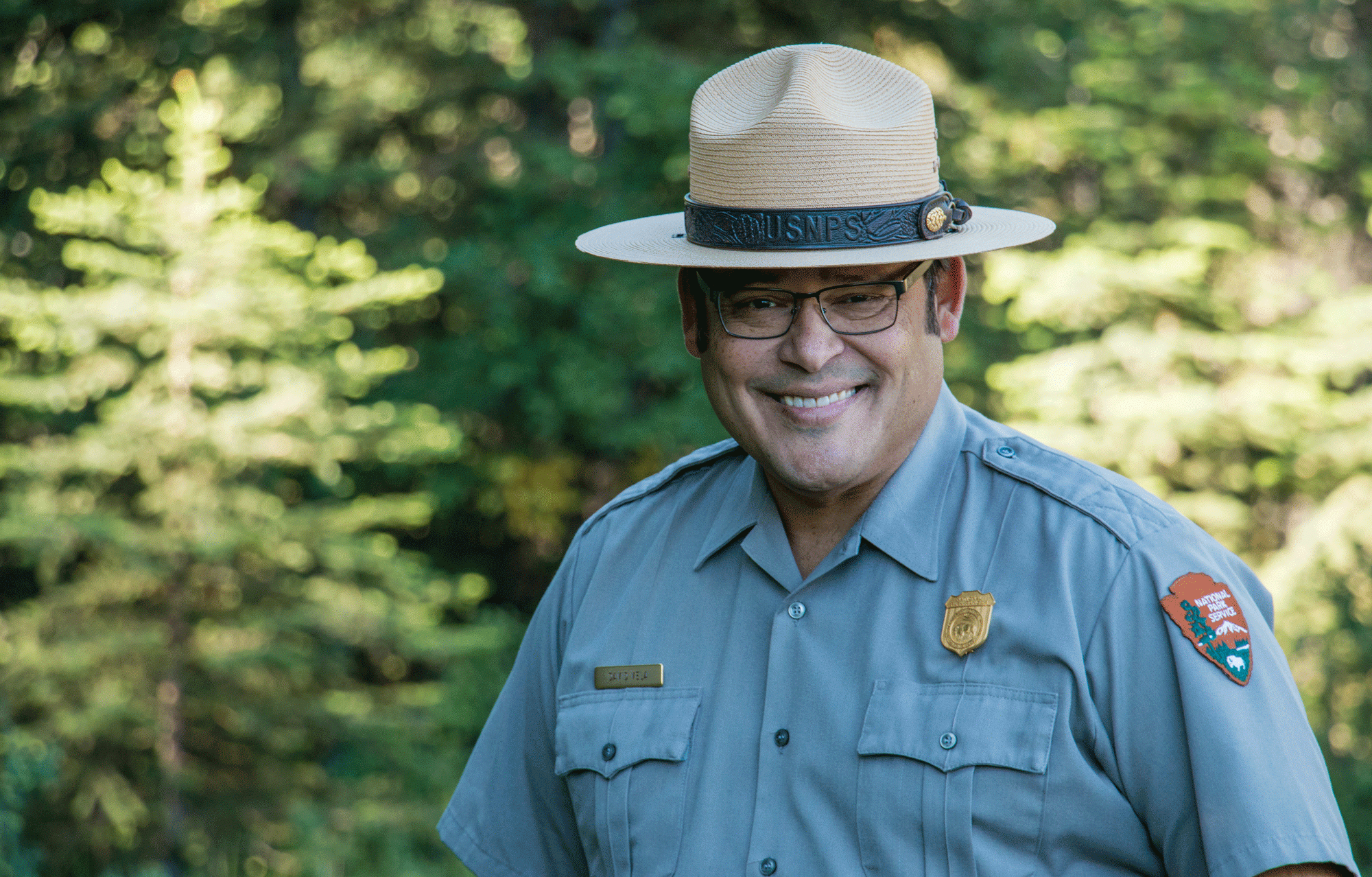Raymond David Vela will lead the National Park Service (NPS) effective October 1, 2019, Interior Department Secretary David Bernhardt announced Monday with the signing of Order 3345, which temporarily puts several Interior Department employees into vacant roles that lack Senate-confirmed replacements. This news comes a little more than a year after Vela was officially nominated to serve as the 19th director of the NPS.
“The selection of David Vela to lead the National Park Service deeper into the 21st century is the right choice at the right time,” Assistant Secretary for Fish and Wildlife and Parks Rob Wallace said in a news release. “I look forward to working with him and congratulate him on this extraordinary accomplishment in an already distinguished career.”
In his nearly 30 years with the Park Service, Vela has led various teams, most recently serving as superintendent of Grand Teton National Park from 2014 to 2018. President Trump tapped Vela as his pick to lead the NPS in August 2018. But following a Senate Energy & Natural Resources Committee hearing and vote to advance his nomination in November 2018, Vela’s appointment was allowed to lapse. Since April, Vela has worked as the acting director of operations for the NPS under former acting director Paul Daniel Smith. Effective today, Vela will continue to serve as acting director of operations in title only; in practice, he will now also act as director of the agency, according to the NPS.
“I am deeply humbled and honored for this opportunity to help prepare, support and empower the National Park Service workforce for a second century of service,” Vela said in the news release.
The acting director role was recently vacated by former acting director Paul Daniel Smith, who will be staying on with the NPS to organize the Park Service’s 250th Independence Day celebration this summer, before he officially retires. Smith served as acting director for the NPS from January 2018 to September 2019, coming out of a three-year retirement to do so. Prior to that, he worked in public service in a variety of roles for nearly four decades, including as the superintendent of the Colonial National Historical Park in Virginia from 2004 to 2015, after which he retired for the first time.
Other notable appointments from today’s new order include acting deputy secretary of the Interior, which will be filled by former Deputy Chief of Staff Kate MacGregor; acting director of the Bureau of Land Management (BLM), which will be filled by William Perry Pendley, former deputy director of policy and programs at the BLM; and acting director of the U.S. Fish and Wildlife Service to former principal deputy director, Margaret Everson.
What does an “acting” director do?
As the acting director of the NPS, Vela will be exercising the authority of the permanent director. Adding the word “acting” to a government title means the employee has not been permanently installed in the role.
“Generally, [the acting director] exercises the authority to perform all the functions of the permanent director, but he or she has not been nominated or confirmed by the Senate,” said Jeremy Barnum, the acting assistant director of communications for the NPS.
As acting director, Vela will lead the federal agency, overseeing more than 20,000 employees, a $3 billion budget and 419 national park units that see more than 300 million visitors every year. The extent to which he’ll exercise decision-making power remains to be seen.
Kristen Brengel, senior vice president of government affairs at the National Parks Conservation Association, worries the NPS acting director still won’t have as much of an impact as a permanent director might, since it’s not official and is still temporary. Erik Murdock, policy director at the Access Fund, offers a similar sentiment. “No acting role is as effective as a permanent,” he said.
“I think Vela might try to do some good things if they give him the room to do it,” Brengel added, optimistically.
Who is Raymond David Vela?
According to experts who work closely with the NPS, Vela is “something of a unicorn” when it comes to being nominated for the position of NPS director, largely because of the bipartisan support he originally received for his appointment.
Vela has been described as an empathetic leader with a knack for finding creative solutions to challenging problems. He served as the associate director for Workforce, Relevancy and Inclusion at the NPS headquarters in Washington, D.C., beginning in 2012, before moving on to become superintendent of Wyoming’s Grand Teton National Park in March 2014.
“[Vela’s] ability to work seamlessly across the public and private sectors allows him to excel in the delivery of public-private partnerships,” said Leslie A. Mattson, president of the Grand Teton National Park Foundation. “David can always be counted on to go the extra mile to ensure our treasured national parks remain protected and relevant for future generations. We were sad to see him move on, but are confident he will now serve all of the National Park Service as well as he did Grand Teton.”
Per the NPS, Vela will assume the role of acting director of the NPS until January 3, 2020, when the Interior will revisit the appointment. In order to be permanently confirmed as director, however, Vela would traditionally need to be renominated by President Trump and testify before the Senate Energy and Natural Resources Committee before being confirmed by Congress. If confirmed, Vela would become the first Hispanic-American director of the Park Service.
When asked about the future of the NPS director role, Barnum said: “We do not have any updates to provide on the director nomination process at this time. Right now, it’s the White House’s decision to both make and announce.”
To learn more about Vela, read the Co-op Journal’s previous coverage: How Vela’s Perspective, Experience Could Benefit Our National Parks


